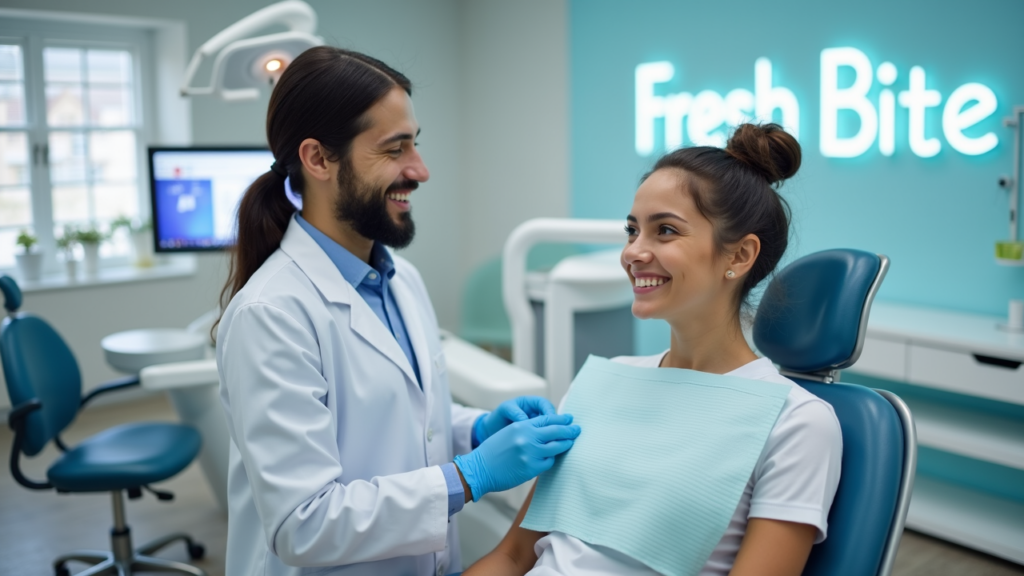Innovations in Cosmetic Dentistry: What’s Next for Perfect Smiles?
In recent years, the field of cosmetic dentistry has undergone remarkable transformations, driven by advances in technology and evolving patient preferences. As we look to the future, several emerging trends and innovations promise to redefine what is possible, making the pursuit of the perfect smile more accessible, efficient, and personalized than ever before.

# 1. Digital Smile Design (DSD)
One of the most exciting advancements in cosmetic dentistry is Digital Smile Design (DSD). This technology allows dentists to use digital tools to analyze a patient’s facial and dental structures and create custom treatment plans. DSD enhances the predictability of outcomes and improves communication between dentists and patients. Through simulations, patients can see their potential post-treatment smile before the actual procedures begin, thus aligning expectations and increasing satisfaction.
# 2. 3D Printing
3D printing technology is revolutionizing many sectors, including healthcare, and cosmetic dentistry is no exception. Dentists are now using 3D printers to create precise dental crowns, veneers, and even orthodontic devices in a fraction of the time it used to take with traditional methods. This not only speeds up the treatment process but also improves the fit and comfort of dental appliances.
# 3. Advanced Materials for Veneers
The materials used for veneers are evolving. Traditionally, porcelain has been the material of choice due to its durability and aesthetic appeal. However, newer materials such as composite resins are being improved to provide better color matching and resistance to staining while preserving tooth structure. These advancements are making veneers more appealing by lowering costs and reducing the invasiveness of the procedures required.
# 4. Laser Dentistry
Laser technology is being increasingly integrated into various cosmetic dental procedures. Lasers are used for gum contouring, tooth whitening, and even in some cases of cavity treatment. The benefits of laser dentistry include reduced pain, minimal bleeding, faster recovery times, and more precise treatments. As laser technology continues to advance, its applications in cosmetic dentistry are expected to expand further.
# 5. Teledentistry
Teledentistry has gained traction as a viable option for initial consultations and follow-up appointments. This innovation is particularly significant in cosmetic dentistry where visual assessments play a crucial role in treatment planning. Teledentistry enables patients to receive expert consultations without geographical constraints, making cosmetic dental services more accessible.
# 6. AI and Machine Learning
Artificial intelligence (AI) and machine learning are beginning to play significant roles in diagnosing issues and predicting treatment outcomes in cosmetic dentistry. AI algorithms can analyze x-rays and imaging more quickly and accurately than ever before, identifying potential issues that might not be visible to the human eye. Moreover, AI can help customize treatments based on predictive models that factor in countless historical outcomes.
# 7. Biocompatible Materials
As health awareness increases, so does the demand for safer, more biocompatible materials in dental treatments. Future innovations in materials science will likely produce even more options that not only mimic natural tooth appearance but are also compatible with body tissues, reducing risks of rejection or adverse reactions.
# 8. Minimally Invasive Techniques
Minimally invasive techniques continue to be a major trend in all fields of medicine, including cosmetic dentistry. Techniques that preserve original tooth structure, such as no-prep veneers or minimally invasive gum lifts, are becoming more prevalent. These methods decrease patient discomfort and recovery time while improving long-term dental health.
# Conclusion
The future of cosmetic dentistry holds exciting possibilities that promise not only to enhance aesthetic outcomes but also improve patient comfort and access to care. With ongoing research and development, the next generation of treatments will likely continue to push the boundaries of what we consider possible in achieving the perfect smile.
As these technologies become mainstream, they will not only transform smiles but also democratize access to cosmetic dental care, allowing more people than ever to benefit from advanced dental treatments. The integration of technology into cosmetic dentistry not only elevates patient care but also underscores an era where beauty and health go hand in hand seamlessly.
Need More Information?


The Integral Role of Nutrition in Oral Health and Natural Teeth Whitening
The Integral Role of Nutrition in Oral Health and Natural Teeth Whitening…

The Future of Teeth Whitening
The Future of Teeth Whitening: Emerging Trends and Innovations In recent years,…

Transforming Smiles
Transforming Smiles, Transforming Lives: The Art of Smile Makeover Specialists In a…

